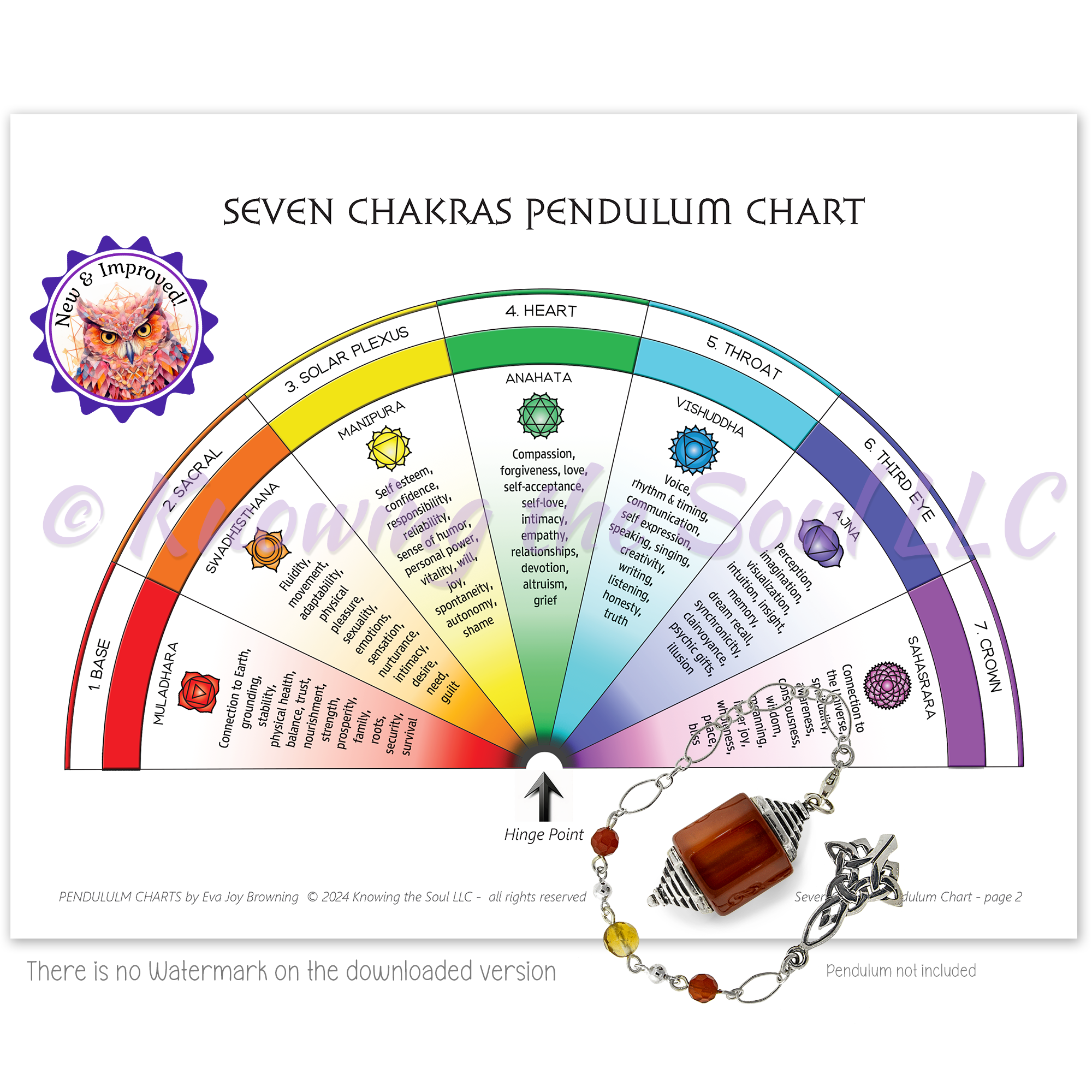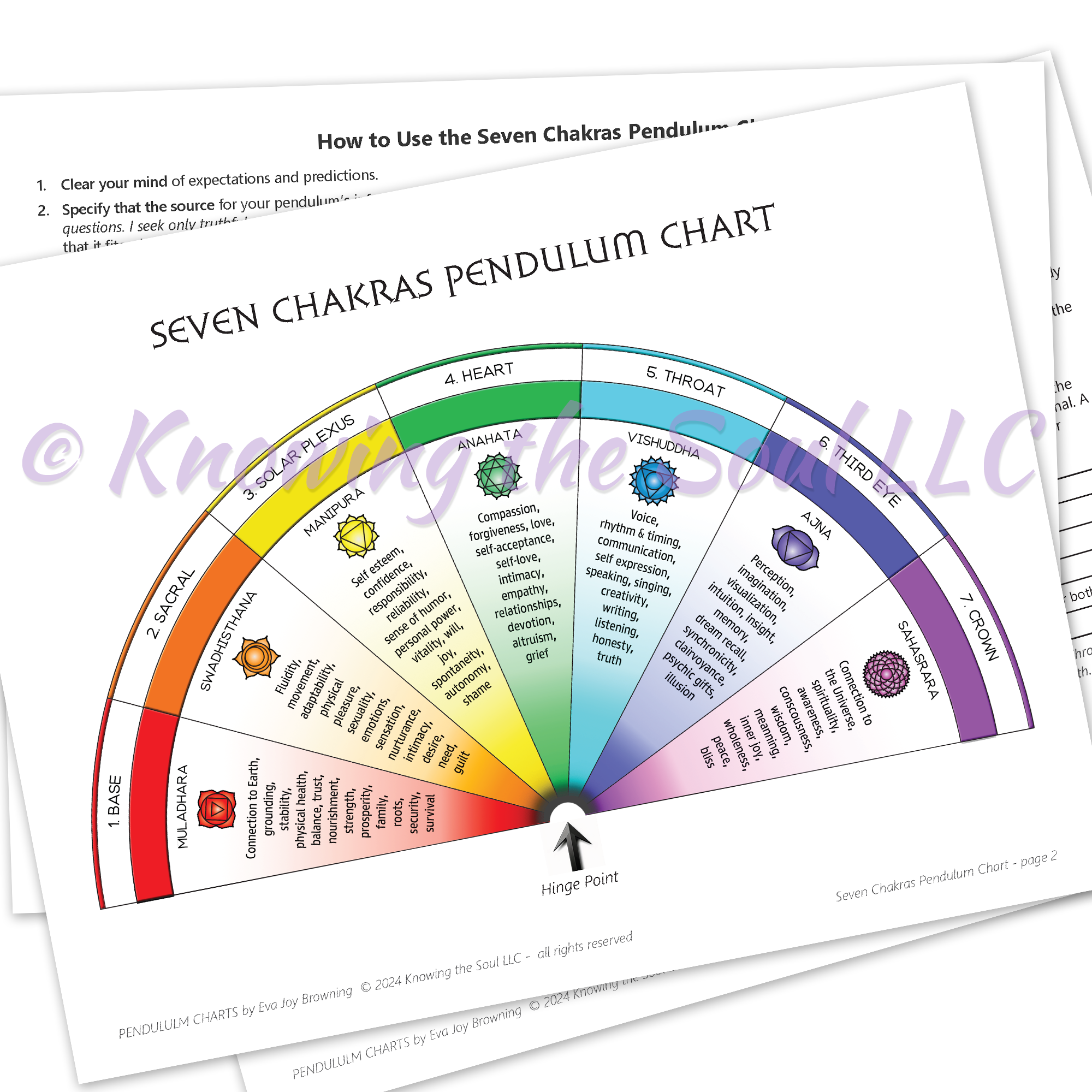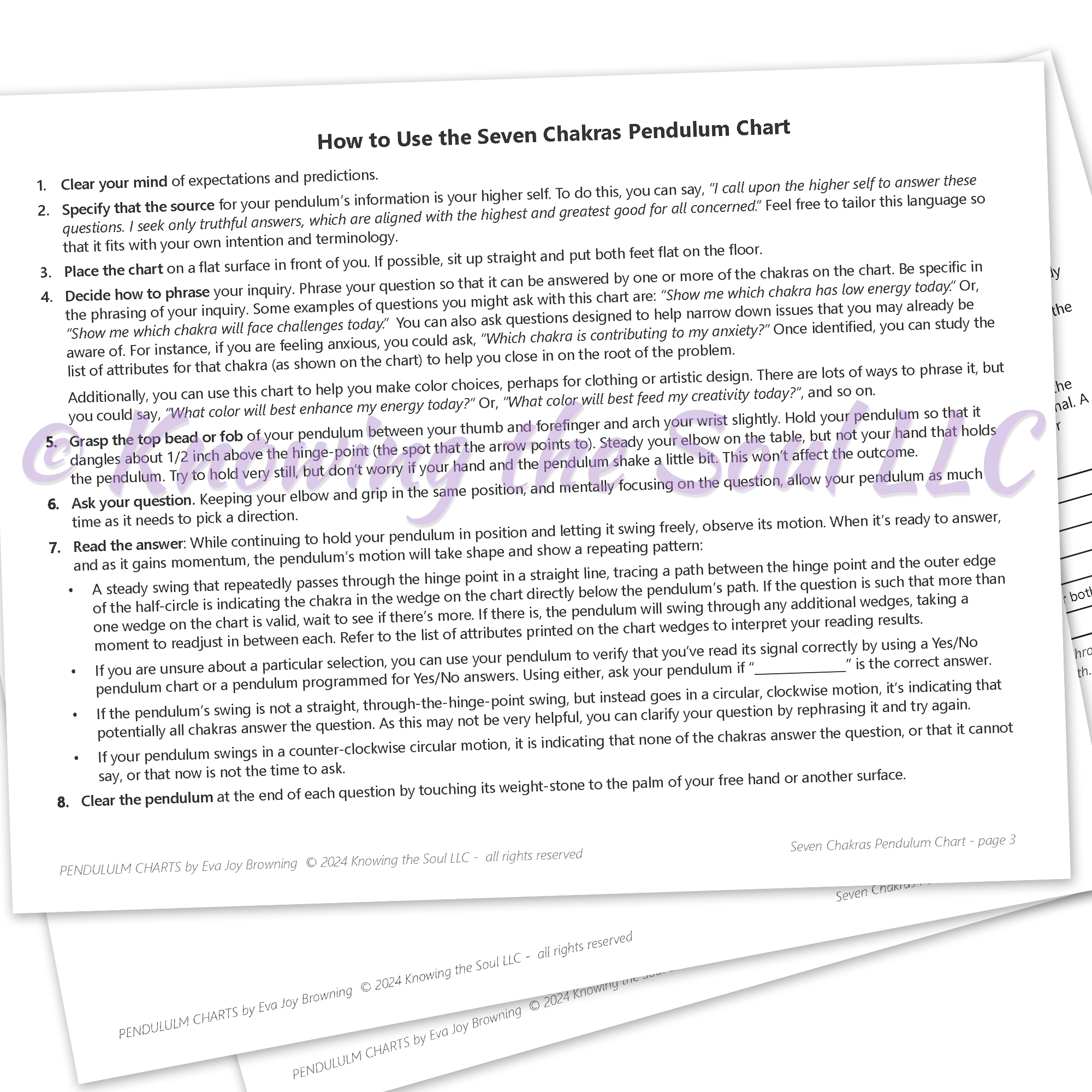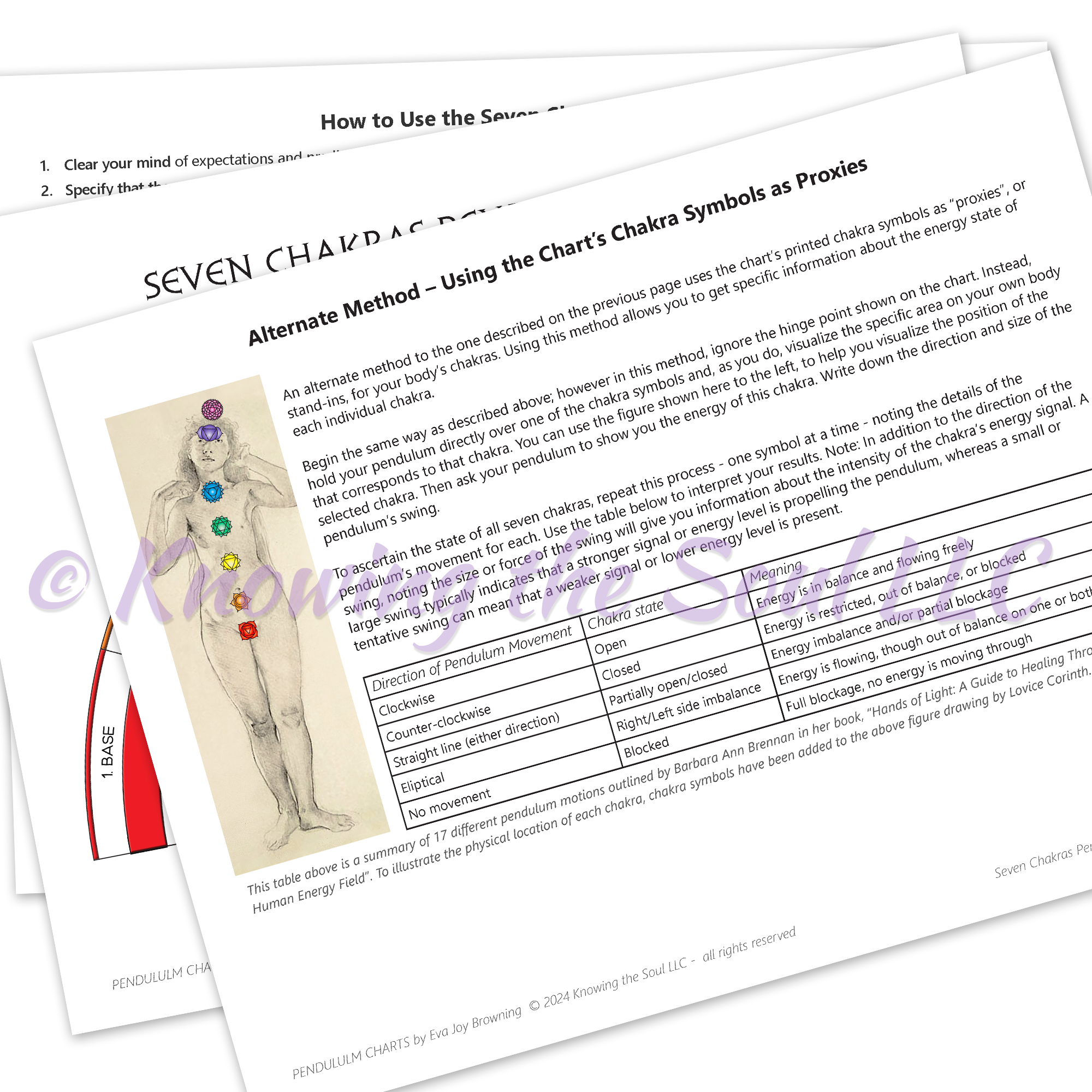Printable Chakra Pendulum Chart - Digital Download - New and Improved!
This product is available for purchase at our Etsy shop.
This chart is available at our Etsy Shop.
Check your chakras using your pendulum and this best-seller, our new and improved, full color chart pendulum chart exclusively by Ask Your Pendulum®. This chart is a digital pdf file that you download and then print out on your own printer to use with a pendulum. Note: The purchased version of this chart does not have the copyright watermark on it. Updated instructions for use are included in the download, as well as instructions for an alternate method to read chakras with your pendulum.
About Chakras
A chakra is a spinning portal into the body’s complex energy system. There are seven major chakras and each one acts as a focal point for reception and transmission of life force energies. The word, “Chakra” (pronounced “CHAWK-raw”) is an ancient Sanskrit word that means “wheel”. Each chakra has its own set of specific attributes and functions. As a group, chakras work together to vitalize the physical body and facilitate development of all aspects of the self: physical, mental, emotional, and spiritual. Our chakras are constantly adjusting as they move through natural cycles, opening and closing to realign to ever-changing energy flows. Removing and/or preventing energy blockages will allow the chakra system to self-regulate and re-balance naturally as it responds to your individual needs.
A note from the creator of Ask Your Pendulum: This chart is the product of my own hard work, research and/or creativity, to which I hold the copyright thereto and reserve all rights. If you are purchasing the download, you may print this chart out for your own use as often as you like. However, you may not distribute, publish, project in any way, or display on any internet website without my express written permission.
How to Use
How to check your chakras with a pendulum and this chart
- Clear your mind of expectations and predictions.
- Specify that the source for your pendulum’s information is your higher self. To do this, you can say, “I call upon the higher self to answer these questions. I seek only truthful answers, which are aligned with the highest and greatest good for all concerned.” Feel free to tailor this language so that it fits with your own intention and terminology.
- Place the chart on a flat surface in front of you. If possible, sit up straight and put both feet flat on the floor.
-
Decide how to phrase your inquiry. Phrase your question so that it can be answered by one or more of the chakras on the chart. Be specific in the phrasing of your inquiry. Some examples of questions you might ask with this chart are: “Show me which chakra has low energy today.” Or, “Show me which chakra will face challenges today.” You can also ask questions designed to help narrow down issues that you may already be aware of. For instance, if you are feeling anxious, you could ask, “Which chakra is contributing to my anxiety?” Once identified, you can study the list of attributes for that chakra (as shown on the chart) to help you close in on the root of the problem.
Additionally, you can use this chart to help you make color choices, perhaps for clothing or artistic design. There are lots of ways to phrase it, but you could say, “What color will best enhance my energy today?” Or, “What color will best feed my creativity today?”, and so on. - Grasp the top bead or fob of your pendulum between your thumb and forefinger and arch your wrist slightly. Hold your pendulum so that it dangles about 1/2 inch above the hinge-point (the spot that the arrow points to). Steady your elbow on the table, but not your hand that holds the pendulum. Try to hold very still, but don’t worry if your hand and the pendulum shake a little bit. This won’t affect the outcome.
- Ask your question, keeping your elbow and grip in the same position.
-
Read the answer: While holding your pendulum in position directly over the hinge point and letting it swing freely, observe its motion. While mentally focusing on the question, allow your pendulum as much time as it needs to pick a direction. When it’s ready to answer, and as it gains momentum, the pendulum’s motion will take shape and show a repeating pattern:
- A steady swing that repeatedly passes through the hinge point in a straight line, tracing a path between the hinge point and the outer edge of the half-circle is indicating the chakra in the wedge on the chart directly below the pendulum’s path. If the question is such that more one wedge on the chart is valid, wait to see if there’s more. If there is, the pendulum will swing through any additional wedges, taking a moment to readjust in between each. Refer to the list of attributes printed on the chart wedges to interpret your reading results.
- If you are unsure about a particular selection, you can use your pendulum to verify that you’ve read its signal correctly by using a Yes/No pendulum chart or a pendulum programmed for Yes/No answers. Using either, ask your pendulum if “_______________” is the correct answer.
- If the pendulum’s swing is not a straight, through-the-hinge-point swing, but instead goes in a circular, clockwise motion, it’s indicating that potentially all chakras answer the question. As this may not be very helpful, you can clarify your question by rephrasing it and try again.
- If your pendulum swings in a counter-clockwise circular motion, it is indicating that none of the chakras answer the question, or that it cannot say, or that now is not the time to ask. -
Clear the pendulum at the end of each question by touching its weight-stone to the palm of your free hand or another surface.





